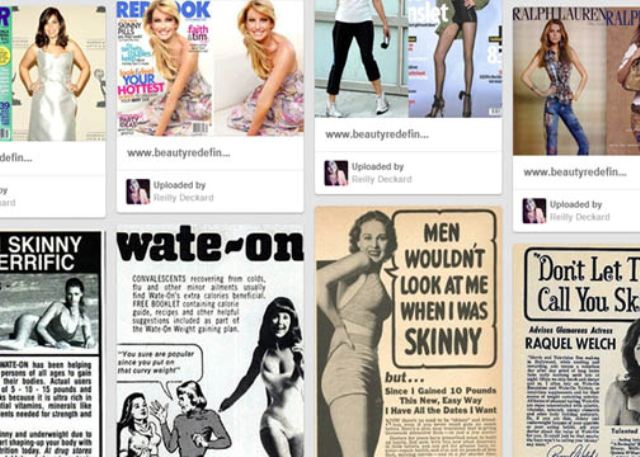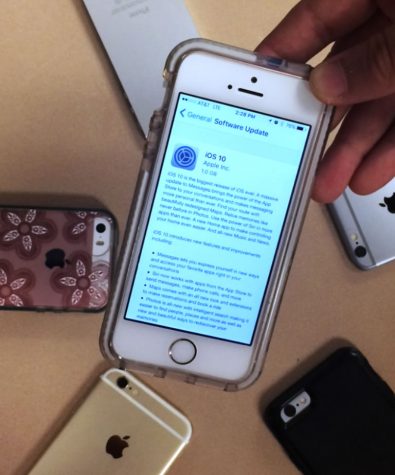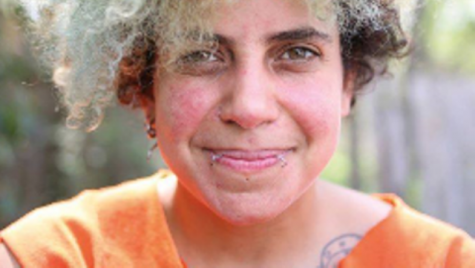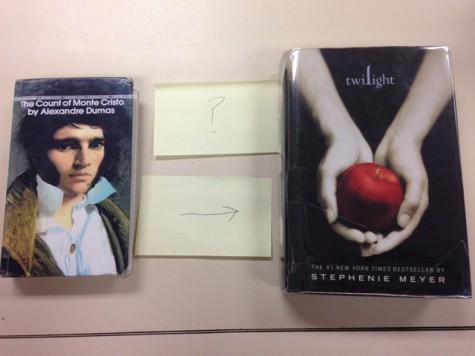We Are Our Society
This Pinterest board displays numerous advertisements from the 1940’s and ‘60’s, as well as more recent advertisements. They show the dramatic change in the world’s views on body image.
Our perspective on attractiveness from the 1940’s to now has changed drastically. It does not matter how honest and generous someone is or how abusive and cruel someone is. The only thing that matters is how many people like their photos on social media and how small the number on the scale is.
Throughout the 1940’s and 1960’s, being thin was considered unappealing. As a matter of fact, people feared being too skinny because being skinny was considered unhealthy. Wate-on was a popular fad-diet used to aid people in gaining ten or more pounds and to increase their sex appeal. The most attractive women during this time were curvy and healthy (Wade). Still timeless 51 years after her death is Marilyn Monroe, a poster girl for Wate-on. She was adored throughout the nation for her beauty and her confidence. However, Monroe was not like the stick-thin runway models who are idolized today. This curvy sex icon had stomach rolls when she sat and her thighs touched when she walked. Her weight fluctuated numerous times throughout her life. None of this stopped her from being considered one of the sexiest and most beautiful women to have ever walked the planet (Huffington). Even later in the 80’s, 90’s and early 00’s, teen idols, such as Raven Symone, were not stick thin. In an episode of “That’s So Raven” on Disney Channel, Symone defends body image and states that all bodies are beautiful (“That’s So Not Raven”). This is exactly what children should be raised hearing. Disney Channel used many body types in their shows and portrayed them all as equal in their importance. Viewers liked the characters based on how they acted and how they treated others, not their body types. Other examples include Hillary Duff (Lizzie McGuire), Ben Savage (Boy Meets World), and Melissa Joan Hart (Sabrina the Teenage Witch).
Unfortunately, times have changed. Advertising has changed. TV has changed. Society has changed. As technology has rapidly developed, so has the taste for enhancement of ourselves and others. Now, all photos seen in magazines are Photoshopped. Yes, every single one. The amount of editing used varies from basic smoothing of skin to cutting someone’s legs down four sizes (Kackie). If someone were to google Photoshop, personal photo retouching, photo editing programs, or anything else similar, they would get at least 2,350,000 results. This includes apps, YouTube tutorials, software and even professional services (Dreisbach). What are these services telling us? Why aren’t we good enough without these programs? Photoshop takes away the things that make people unique, yet we idolize everything that helps us erase these things. Even the celebrities being Photoshopped have had enough of it. For example, Kate Winslet, full-bodied Titanic star who is well known and loved for her beauty and curves, was featured on a GQ magazine cover in 2003. In her photo, she appears at least six inches taller with her curves erased and her legs slimmed down so much that they don’t resemble her own. She was irritated by the magazine’s decision to edit her body and told Britain’s GMTV that she didn’t want to be portrayed that way (Beauty Redefined). Photoshop alters people’s perception of normal, healthy and attainable. TV shows, even children’s TV shows, do this as well. Things such as eating disorders are now joked about or even encouraged. Disney Channel now displays actors who are either thin or thinner than thin. On the show “Shake It Up”, a character playing a supermodel exclaims, “I could eat you up. Well, if I ate” to 14-year –old Cece and 15-year-old Rocky. This was found so distasteful by former Disney Channel star and recovering bulimic, Demi Lovato, that she tweeted the network completely outraged. Only then did Disney Channel apologize and choose to pull the problem episode as well as one more additional episode (Johnson). Television is also filled with thousands upon thousands of advertisements meant to cause the viewer to find flaws in themselves that the intended product can fix. Many advertised diets not only fail after a period of time, but are also causing long term health problems for their users and are now becoming illegal. In an Australian study, it was found that 90% of people who lose weight dieting gain the weight back. This is because most diet plans limit the caloric intake and cause the dieter’s metabolism to slow down (Kolata). Regrettably, society does not tell us how dangerous diets are. It only tells us that we need it to make ourselves worthy. Even some well-known and adored celebrities teach us what we need to look like and how we can look more like them by changing ourselves. These are the people we look up to. These are the people we want to be like, but why? Why would we want to be like people who help us place the voice in our heads that tells us we aren’t good enough? If someone is not stick-thin, and is proud of their body, it comes as a shock. Take Lizzie Miller for example. Miller is considered to be a plus-sized model due to her 12-14 dress size. In the modeling industry today, sizes six and above are considered to be plus-sized. Instead of Miller shaming herself for being in this category, she proudly posed for a 2009 self-image magazine spread that showcased her “imperfect” body, and she received an overwhelming response. Men and women wrote in thanking her for her bravery; however, other plus-sized model industries responded with complaints such as her legs being too big. This is what we have come to. Even plus-size has a limit: dress size 6-12. This is smaller than the average women in the US (Wallis). Yes, this is an incredible thing that she has done, but why is this news? Why is the act of someone actually loving themselves as they are so rare that it makes headlines? Where did this “perfect image” mindset begin?
Perhaps the worst part of all of this is the fact that everyone knows what this mindset can do, yet they do not care. It affects everyone in some way. Body image has given people the license to bully or harass others because they don’t meet this ideal picture. Over-weight or obese children are more apt to get bullied (Brooks). Why? Children are being raised to focus on a person’s outer qualities more than their inner. They are taught to be the best and make social connections with those who are considered the best. It isn’t right. The need to be unrealistically perfect has driven thousands upon thousands of people to develop depression and eating disorders, or in worse case scenarios, to death. In fact, there has been a direct correlation of the Photoshop increase in advertisements and the eating disorder increase. The size of the average person continues to increase as the size of models and actresses continue to decrease, further widening the gap and raising these expectations. Diet ads have dramatically increased since 1973, appearing in women’s magazines about 10.5 times more frequently than men’s (Spettigue/Henderson). Anorexia is the third most common chronic illness among adolescents. Eating disorders as a whole have the highest mortality rate of any mental illness and affect over 50% of girls and 30% of boys. 95% of those are between the ages 12 and 29. Advertisements play such an incredibly large role in this that it’s sickening. Only 5% of females have the body type portrayed in ads. After being exposed to these ads, 47% of girls, grades fifth through twelfth, reported wanting to lose weight, and 69% stated it was because of magazine ads. That is horrendous. These people tend to ultimately die of heart failure, organ failure, malnutrition or suicide (ANAD). The most disturbing and ridiculous part of this is that eating disorders do not affect teens and adults. Included in the eight to ten million Americans who suffer from eating disorders are children as young as first grade, ages six to seven. They are already experiencing the fear of being “too fat” or “unappealing”. According to Time Magazine, 80% of children have been on a diet by the time they have reached fourth grade (Marisol). 42% of 1st to 3rd graders want to be thinner, and 81% of 10 year olds are afraid of being fat (ANAD). It only gets sadder from here. Only 30-40% of people actually go through full recovery from their eating disorder because it is outrageously expensive to be treated. Treatment can cost anywhere from $500 to $2,000 per day. That can add up to almost $30,000 a month, which typically is not covered by insurance (SCDMH). Society is tearing its people apart and not bothering to pick up the pieces.
Think of that “perfect body image”. Think of what makes it so desirable. Why is one body image better than another? It is because society teaches us this, right? Society tells us we aren’t good enough, correct? It is time for a wakeup call. Think of what society is. Think of who makes it up. We are society. We set these standards. We shove diet plans and unattainable criteria down each other’s throats. We tell others and ourselves that no one is ever good enough. We are the problem, but we are also the solution. Instead of tearing each other down, build each other up. Instead of idolizing Adriana Lima for her supermodel weight loss regimen, idolize those who have decided to love themselves for who they are, and encourage others to love themselves as well. Praise people like Lizzie Miller and Demi Lovato. We need examples to look up to for encouragement. We need to change. We can’t allow ourselves to be taken down by unrealistic ideals. Change society for our children. Change it for our sisters. Change it for our best friends. Most importantly, change it for ourselves. Barbara McAneney, an AMA board of trustees’ physician, stated, “We’ve got to stop pretending those Photoshopped bodies are ‘wonderful.’ You know what I think is wonderful? A body that tells the story of your life. Muffin-top from eating a few extra cupcakes with your favorite niece? That’s wonderful. A scar on your chin from that time you fell out of your cousin’s tree house? That’s wonderful. Wrinkles on your forehead from squinting into the sun, crow’s feet around your eyes from laughing ‘till it hurts, chicken pox scars, stitches marks, blemishes, bumps, bruises and scrapes: Wonderful, wonderful, wonderful, wonderful. Why do we want to cover up the things that make us us? Our “imperfections” tell our stories. If our bodies aren’t flawless, it’s because we’ve lived” (Hogan).
______________
Works Cited
“That’s So Not Raven.” That’s So Raven. Disney Channel. N/A, 9 Apr. 2003. Television.
ANAD. “Eating Disoder Statistics.” ANAD. N/A. 19 Sept. 2013. http://www.anad.org/get-information/about-eating-disorders/eating-disorders-statistics/
Beauty Redefined. “Photo-shopping: Altering Images and Our Minds!” Beauty Redefined. 30 Nov. 2011. 19 Sept. 2013. http://www.beautyredefined.net/photoshopping-altering-images-and-our-minds/
Brooks, Megan. “Obese Kids More Apt to be Bullied, Study Shows.” Reuters. 3 May 2010. 8 Oct. 2013. http://www.reuters.com/article/2010/05/03/us-obese-s-idUSTRE6421XQ20100503
Dreisbach, Shaun. “Retouching: How Much Is Too Much?” Glamour. 8 Feb. 2013. 19 Sept. 2012. http://www.glamour.com/health-fitness/2012/02/retouching-how-much-is-too-much
Hogan, Heather. “Doctors to Magazines: Stop Ruining Young Girls’ Lives with Photoshop.” AfterEllen. 12 July 2011. 19 Sept. 2013. http://www.afterellen.com/doctors-to-magazines-stop-ruining-young-girls-lives-with-photoshop/07/2011/
Huffington Post. “Marilyn Monroe Remains a Timeless Hollywood Icon 51 Years After Her Death.” Huffington Post. 8 Aug. 2013. 8 Oct. 2013. http://www.huffingtonpost.com/2013/08/06/marilyn-monroe-death_n_3714178.html
Johnson, Chris. “’Making Fun of Eating Disorders is NOT a Joke’: Demi Lovato Blasts Disney Channel Over Anorexia Joke.” Daily Mail. 25 Dec. 2011. 8 Oct. 2013. http://www.dailymail.co.uk/tvshowbiz/article-2078384/Demi-Lovato-blasts-Disney-Channel-anorexia-joke.html
Kackie. “The Truth: ALL Magazine Pictures Are Photoshopped.” Lovelyish: More Than Just A Pretty Face. 12 July 2012. 19 Sept. 2013. http://www.lovelyish.com/2012/07/21/the-truth-all-magazine-pictures-are-photoshopped/
Kolata, Gina. “Studies Show Why It’s Hard to Keep Weight Off.” The New York Times. NY Times Health. 26 Oct. 2011. 21 Oct. 2013. http://www.nytimes.com/2011/10/27/health/biological-changes-thwart-weight-loss-efforts-study-finds.html?_r=0
Marisol Recovery Centers. “Eating Disorder Statistics.” Marisol Recovery Centers. N/A. 19 Sept. 2013. http://www.mirasol.net/eating-disorders/information/eating-disorder-statistics.php
South Carolina Department of Mental Health (SCDMH). “Eating Disorder Statistics.” DMH. N/A. 19 Sept. 2013. http://www.state.sc.us/dmh/anorexia/statistics.htm
Spettigue, Wendy/ Henderson, Katherine. “Eating Disorders and the Role of the Media.” NCBI Journal. 13 Feb. 2004. 19 Sept. 2013. http://www.ncbi.nlm.nih.gov/pmc/articles/PMC2533817/
Wade, Lisa. “Wate-on: ‘True Beauty Includes a Full Figure.’” The Society Pages. Independent Publisher, 25 Aug. 2011. 19 Sept. 2013. http://thesocietypages.org/socimages/2011/08/25/i-put-on-ten-pounds-three-ounces/
Wallis, Lucy. “5 Photos that Sparked Body Image Debates.” BBC. 12 Nov. 2012. 8 Oct. 2013. http://www.bbc.co.uk/news/magazine-20252921

Reilly Deckard is constantly listening to something. She is full of dreams and desires that she works towards every day. She lives for the people she loves...











